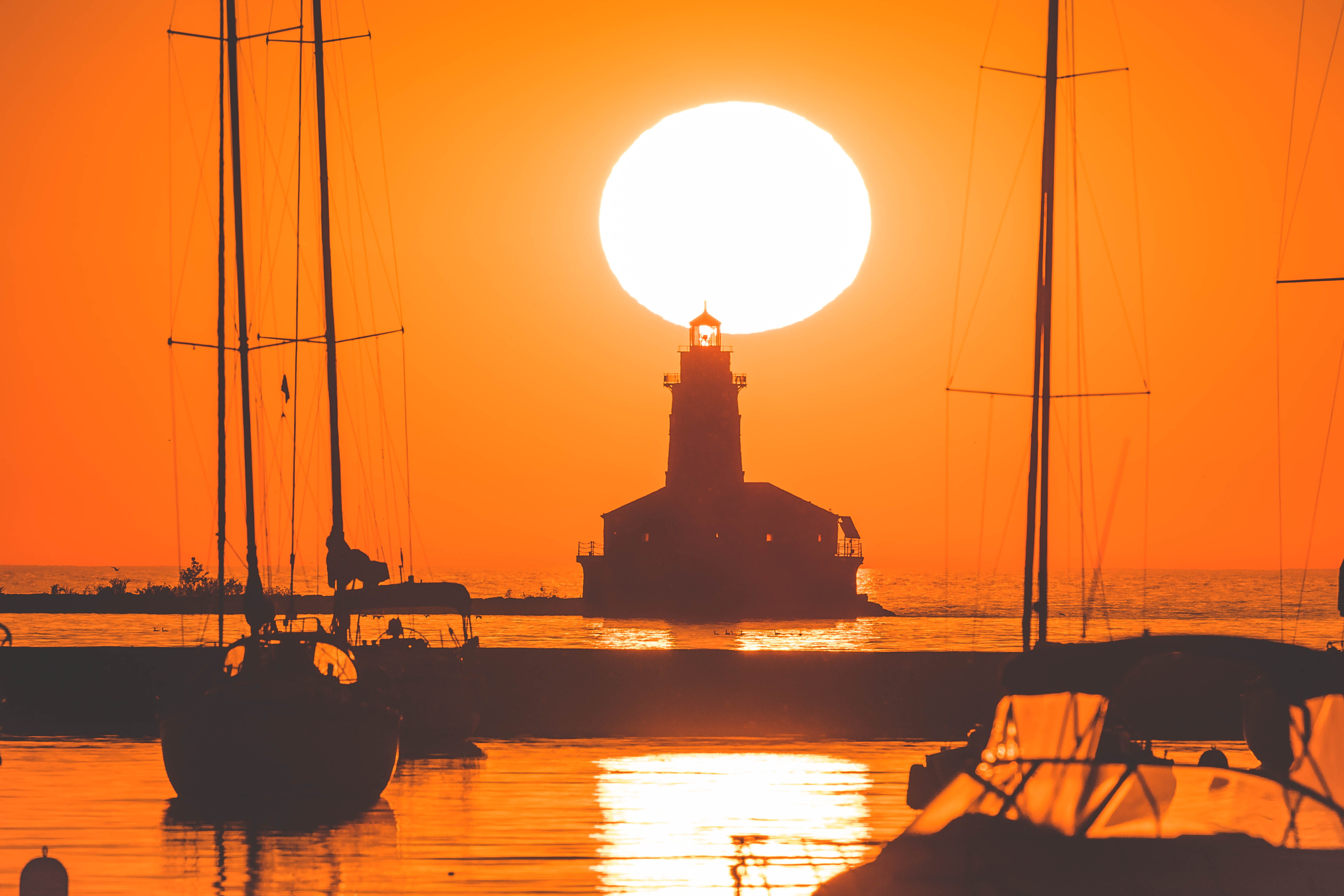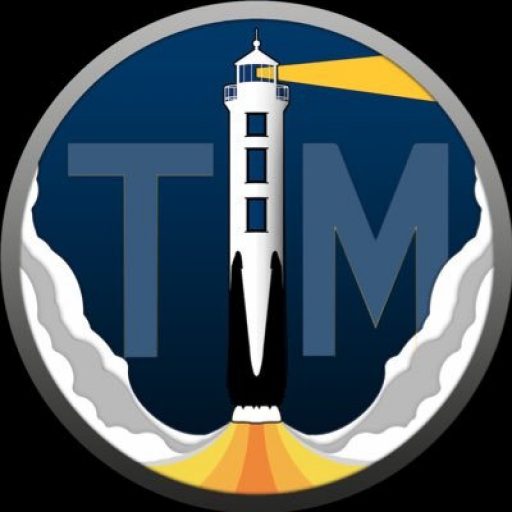Thursday morning, I got up at 3:30 AM and met my buddy Craig Vander Galien downtown Chicago to attempt some sunrise photos with the Chicago Harbor Lighthouse.
It is my personal goal to make a unique photograph of each lighthouse that surrounds Lake Michigan by the end of 2017. I started the journey in early February with the Michigan City Lighthouse and have photographed over 20 since then!
Here is a map of the Lighthouses I made that I plan to visit before the end of the year, color-coordinated by state.
I have thought for awhile on how best to capture the Chicago Harbor Light and decided that a sunrise would be best.
After checking the angles using TPE: (The Photographer’s Ephemeris)
I figured out that the Northeast corner of the Buckingham Fountain was the best place to observe from.
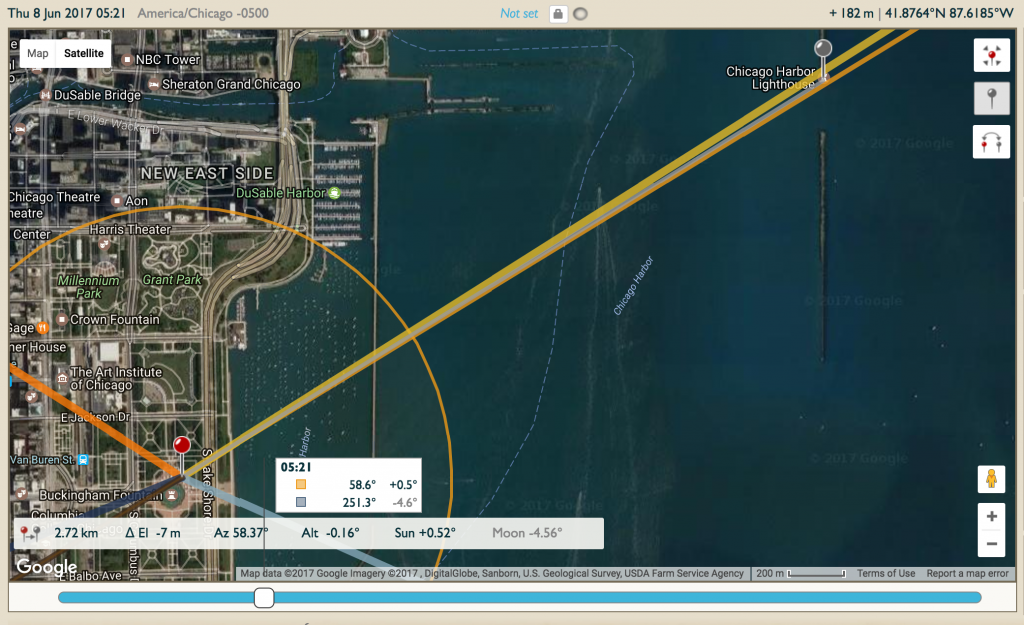
Breaking down the above graphic:
- 2.72km: This is the straight-line, as the crow flies distance to the subject (lighthouse)
- Triangle “El”: This means “delta” elevation, or change in elevation.
- Sun +0.52°: The angular height of the Sun above(+)/below(-) the horizon.
- The Sun is ~0.50° wide in the field-of-view. So at +0.52° the Sun has just risen, in full, above the horizon.
- 05:21: 5:21 AM local time
The main thing I looked for when searching for a location was:
- Distance
Using longer focal lengths, the size of the Sun changes in the frame. Using a larger distance, and a longer focal length together you can make the sun look HUGE compared to the lighthouse. If you were right next to the subject (lighthouse, in this case) and used a big zoom lens, the Sun would be incredibly large but you couldn’t fit the lighthouse in the frame. Distance is key #1.
- Negative change in elevation.
Δ Elevation is measured from the red to the grey pin. A negative change in elevation means it is going down from red to grey. This negative change allows me to be higher than the Lighthouse and see over boats/breakwaters/obstacles that could get in the way, from the viewing location of Buckingham Fountain.
Next, I needed to figure out what focal length I would need to capture the lighthouse at a reasonable size.
At 2.7 km (1.67 mi), using an 8mm fisheye, 24-70mm, or 70-200mm lens aren’t going to be enough.
The exact focal length necessary can be calculated easily using the website ScenePlanner.
You simply:
- Select your Camera model or input manually
- Select Sensor Long/Short Side
- This sounds complicated, but it is just asking you whether you will be taking the picture vertically or horizontally.
- Input subject size (lighthouse height) in inches, feet, or meters
- Input distance to subject in feet or meters
- Select the percentage of the frame you’d like your subject to “take up” (0-100%)
Voila. You are given the required focal length (lens) you would need to use.
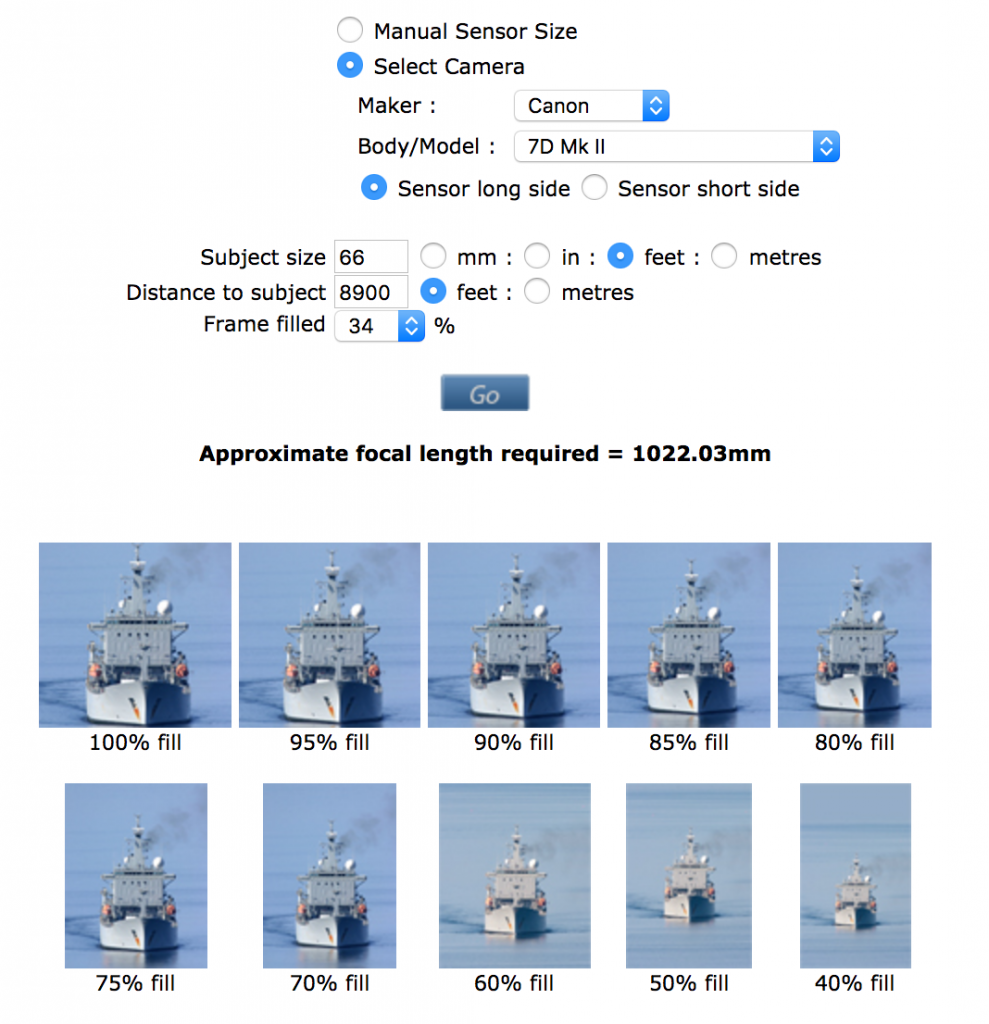
Given my inputs/distances/heights, I would need the equivalent of a 1000mm lens.
The highest focal length lens I own right now is a 75-300mm kit lens. This wouldn’t be enough.
Someday, I will own one but for these Tom Jones, a real close friend of mine, and fellow photographer entrusted me with his Canon 500 f/4 and 2X teleconverter (500mm X 2 — 1000mm equivalent) so these photos would not be possible without his trust and his help.
For some of the first couple, they are taken at a 35mm equivalent of 1600mm.
I use a Canon 7D Mark II (APS-C, or “crop sensor” camera) that lends a 1.6X crop factor to any lens that you pair it with. It doesn’t utilize the full image circle created by the lens, like full-frame cameras do (Canon 1D, 5D, 6D).
500mm lens * 2X teleconverter * 1.6X crop sensor = 1600mm

Graphic credit: LowEndDSLR.com
Here’s a few of my favorites that I was able to capture!
This was the first photo I took, at 5:10 AM five minutes before sunrise. The glow of the approaching Sun is visible.
hi-res/prints: photos.tmahlmann.com
First light. I thought that sliver was a cloud right on the horizon, illuminated by the Sun underneath it since it was so flat. That flat little sliver is the Sun.
hi-res/prints: photos.tmahlmann.com
Obvious now. Here comes the Sun. Gametime.
hi-res/prints: photos.tmahlmann.com
One thing I didn’t plan for — the sailboats in the harbor that were “in the way.”
When planning in Google Earth, the boats were absent:
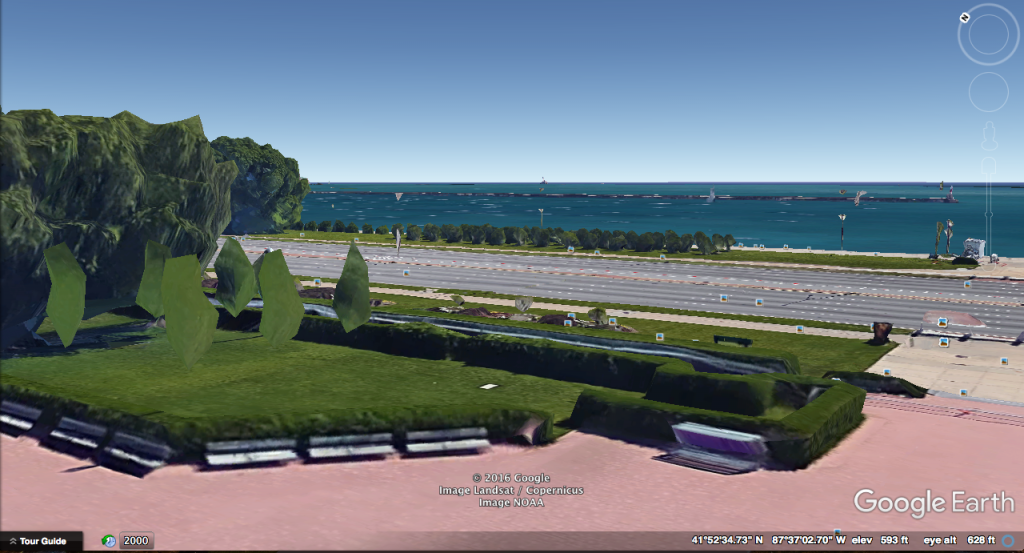
Part of me enjoys them, part of me wishes the frame was clean.
hi-res/prints: photos.tmahlmann.com
hi-res/prints: photos.tmahlmann.com
I ended up moving around a bit, getting some of both.
hi-res/prints: photos.tmahlmann.com
Taking the 2X teleconverter was a good idea. “Zooming out” if you will, to see more of the scene.
hi-res/prints: photos.tmahlmann.com
The reflections off the calm Monroe Harbor were awesome.
hi-res/prints: photos.tmahlmann.com
hi-res/prints: photos.tmahlmann.com
I’ve captured it with the Sun, now I have to capture it with the Moon… and keep working towards purchasing my own 500mm f/4L someday.
Help me continue my lighthouse journey this year!
Leave your email below to keep up-to-date with the latest in spaceflight! (A few emails a month, max.)

